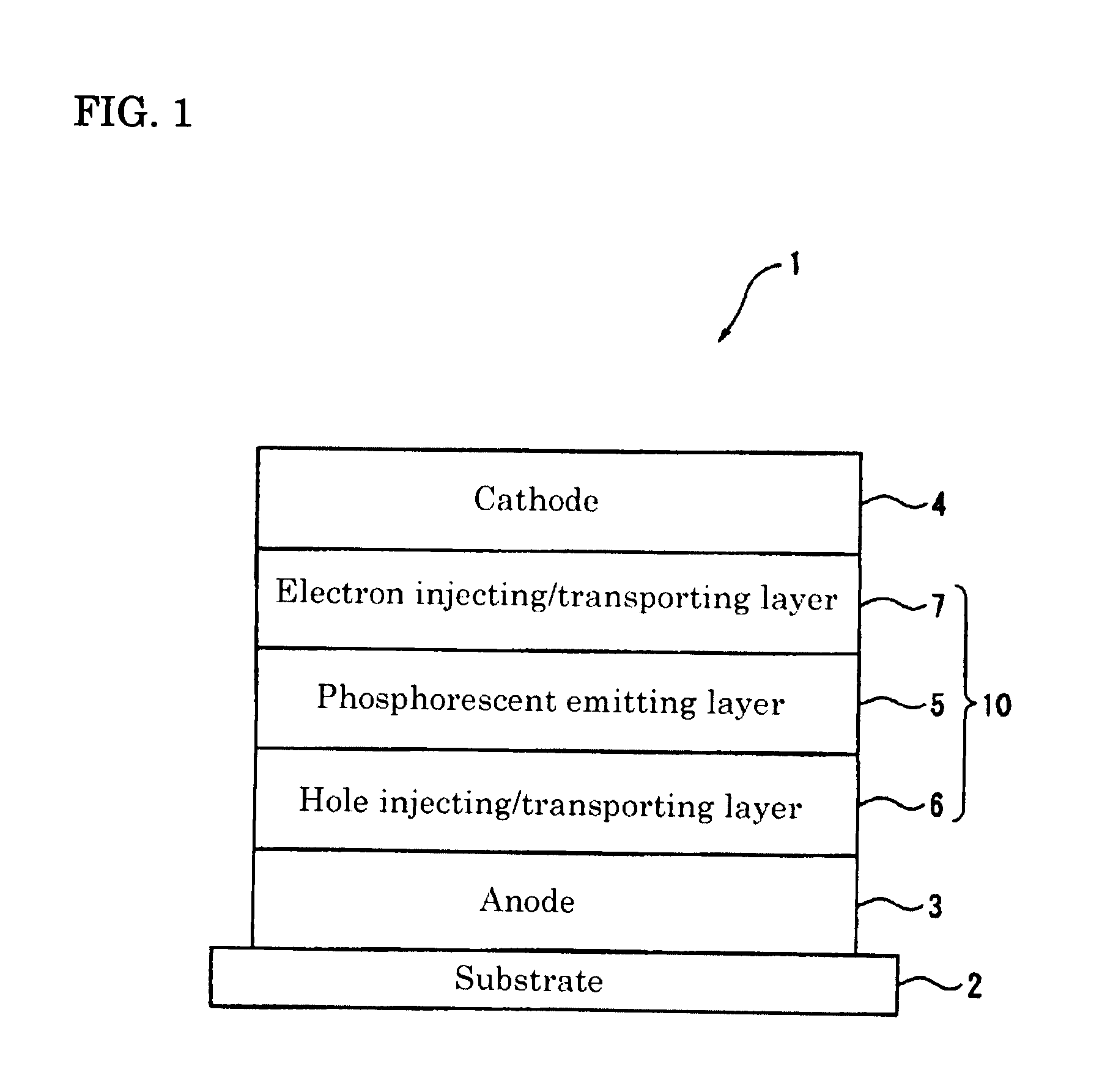Material for organic electroluminescent element, and organic electroluminescent element
a technology of electroluminescent elements and materials, applied in thermoelectric devices, other domestic articles, organic chemistry, etc., can solve the problems of short life, device unsuitable for practical use on the other side, and inability to meet the practical application in some cases, and achieve long life and high efficiency.
- Summary
- Abstract
- Description
- Claims
- Application Information
AI Technical Summary
Benefits of technology
Problems solved by technology
Method used
Image
Examples
examples
[0314]The production of the materials of the invention will be described with reference to synthetic examples, but it should be noted that the present invention is not limited thereto.
Synthetic Reference Example 1-1
Synthesis of 2-bromo-9,9-dimethyl-7-(naphthalene-2-yl)-9H-fluorene
[0315]
[0316]In argon atmosphere, a mixture of 13.91 g (80.9 mmol) of 2-naphthaleneboronic acid, 30.0 g (80.9 mmol) of 2-bromo-7-iodo-9,9-dimethylfluorene, 4.67 g (4.0 mmol) of tetrakis(triphenylphosphine)palladium (0), 200 ml of toluene, 200 ml of dimethoxyethane, and 122.36 g of a 2 M sodium carbonate aqueous solution was refluxed under stirring for 8 h and left standing overnight. After adding water, the mixture was stirred at room temperature for one hour. After filtration and extraction with toluene, the organic phase was washed with water and then with a saturated saline solution. After drying over sodium sulfate, the toluene was distilled off under reduced pressure. The residue was purified by silica ...
synthetic example a-1
Synthesis of Compound 2-2
[0361]
[0362]In argon atmosphere, a mixture of 3.30 g (8.26 mmol) of 2-boromo-9,9-dimethyl-7-(naphthalene-2-yl)-9H-fluorene, 2.46 g (8.26 mmol) of 3-(phenanthrene-9-yl)phenylboronic acid, 0.38 g (0.33 mmol) of tetrakis(triphenylphosphine)palladium (0), 90 ml of toluene, 30 ml of dimethoxyethane, and 12.5 g of a 2 M sodium carbonate aqueous solution was stirred at 85° C. for 8 h. The reaction mixture was left cooled down to room temperature, added with water, stirred for one hour, and left standing overnight. Then, the reaction mixture was added with water and stirred at room temperature for one hour. After filtration, the filtrate was extracted with toluene. The organic phase was washed with water and then with a saturated saline solution and dried over sodium sulfate, and then toluene was removed by distillation under reduced pressure. The obtained oily substance was purified by silica gel chromatography to obtain 3.40 g (yield: 72%) of compound 2-2.
[0363]Ma...
synthetic example a-2
Synthesis of Compound 2-1
[0364]
[0365]Compound 2-1 was synthesized in the same manner as in the synthesis of compound 2-2 except for using 4-(phenanthrene-9-yl)phenylboronic acid in place of 3-(phenanthrene-9-yl)phenylboronic acid.
[0366]Mass spectrum analysis showed m / e=572 to the molecular weight of 572.25.
PUM
| Property | Measurement | Unit |
|---|---|---|
| triplet energy | aaaaa | aaaaa |
| triplet energy | aaaaa | aaaaa |
| wavelength | aaaaa | aaaaa |
Abstract
Description
Claims
Application Information
 Login to View More
Login to View More - R&D
- Intellectual Property
- Life Sciences
- Materials
- Tech Scout
- Unparalleled Data Quality
- Higher Quality Content
- 60% Fewer Hallucinations
Browse by: Latest US Patents, China's latest patents, Technical Efficacy Thesaurus, Application Domain, Technology Topic, Popular Technical Reports.
© 2025 PatSnap. All rights reserved.Legal|Privacy policy|Modern Slavery Act Transparency Statement|Sitemap|About US| Contact US: help@patsnap.com



